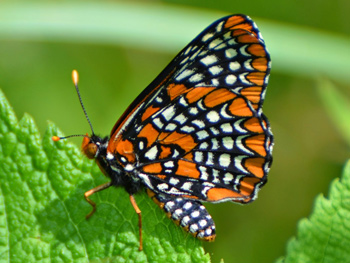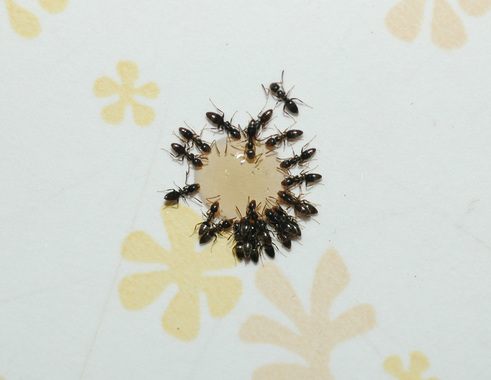|
The state insect of Maryland—the Baltimore Checkerspot butterfly—only exists in small, isolated areas in the state, mostly in Western Maryland. One of the most vividly colored butterflies with its bright orange, white and black pattern, experts worry that the butterfly, once fairly common, may disappear entirely from the state.
Researchers at the University of Maryland have launched a crowdfunding campaign to raise $5,000 to help bring the state insect back to College Park. Post by Justin Rosenthal and Nathalie Steinhauer The Challenges of Optional Sex: the case of reproductive polyphenism in aphids Insects lay eggs, right? Well, in aphids, a speciose family of the Sternorrhyncha, females actually have the option of laying eggs or producing live young from embryos (instead of laying eggs). This is an example of reproductive polyphenism. Polyphenism is the ability of some organisms to adapt their phenotypes in response to environmental cues (Figure 1, from Ogawa and Miura 2014). In aphids the two reproductive strategies are a response to changes in photoperiod (day length) and this polyphenism is observed ubiquitously in these insects. In their life cycle, after having survived the winter as frost-resistant eggs, founder females reproduce asexually birthing live young that will produce further asexual females. Asexual females are all about high reproductive rates and dispersion. Those asexual females actually exhibit a second type of polyphenism in that some of them can develop wings promoting dispersion when its current location is experiencing crowded conditions. As day length gets shorter, indicating the coming of winter, sexual egg-laying females are produced (Figure 1). But how are those changes mediated by the environmental signals and how does the system switch from sexual to asexual reproduction?
In last week’s colloquium, Gregory Davis illustrated the complexity of deciphering the mechanisms behind reproductive polyphenism using aphids as his model. Much of this work is available in his most recent review paper (Davis, 2012). He believes that such a novelty may have developed because an initial, slight change in morphology may have stimulated a modification of life history, with changes in life history feeding back to further changes in morphology, continuously playing off each other until obvious changes in body structure and development evolve. An Agricultural Balancing Act: |
Categories
All
Archives
June 2024
|
Department of Entomology
University of Maryland
4112 Plant Sciences Building
College Park, MD 20742-4454
USA
Telephone: 301.405.3911
Fax: 301.314.9290
University of Maryland
4112 Plant Sciences Building
College Park, MD 20742-4454
USA
Telephone: 301.405.3911
Fax: 301.314.9290



 RSS Feed
RSS Feed




